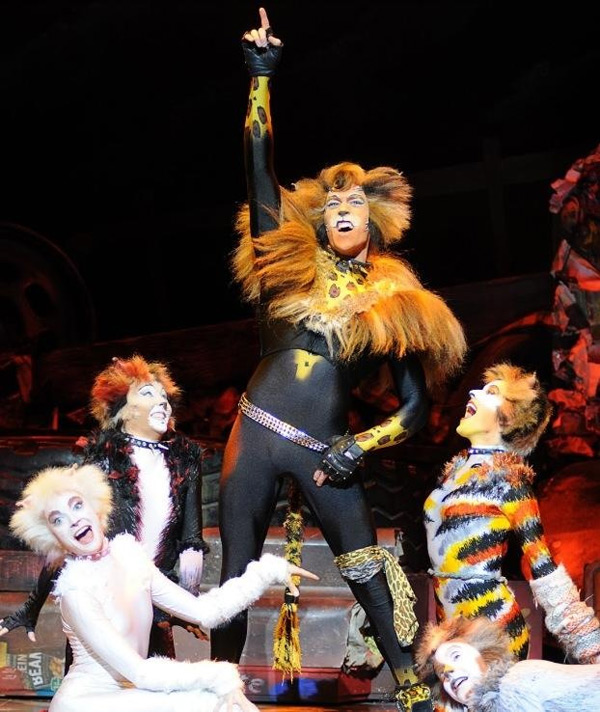
As the Cats tour grips the country in a wealth of feline frolics and incredible talent, Dance Direct caught up with Dawn Williams, who is fresh out of musical theatre college and is playing kitten Jemima.
Dawn, have you always wanted to be on stage?
I have wanted to be on stage, for as long as I can remember, and have been dancing, singing and acting from such a young age. Performing was the only thing that I knew I wanted to do as a career.
 Where did you go to train and what was it like there?
Where did you go to train and what was it like there?
I went to Harlequin Stage School in Worcesterhire, as well as WODYS amateur dramatics and Emma Winscom Young Singers. For the last 3 years, I have trained at Laine Theatre Arts in Epsom, Surrey, where I graduated in Professional Musical Theatre and Dance. It was three years that I wouldn’t change for the world and I feel that it was the right school for me as it fulfilled all my needs and concentrated on aspects which I needed to improve and learn more about. Of course, it had highs and lows, and it was never easy, but the hard work was definitely worth it and I graduated ready for the industry. Well, as ready as I could have been! I think you are always going to be learning ‘on-the-job’ and from other people throughout your career.
Did you audition a lot before Cats?
I started auditioning in my final term at Laine, through the college agency. I auditioned for cruises, West End shows and tours, even flew to Germany for an audition. I did okay in these auditions, and wasn’t too disappointed as I was still at college. I then got a QDOS pantomime playing Wendy in Peter Pan. I was over the moon, as I felt that this was a good place to start my career. From graduating from Laine I then got a new agent. I got signed by Gina Rowland from Bronia Buchannan and was fortunate to obtain fringe work at the Union theatre in a production of Call Me Madam directed by Michael Strassen. It was then that I started to audition for Cats and was successful. I was very lucky as I then went from job to job.
What was the Cats audition like?
The Cats audition process started with a dance round first, where we were taught a section of the Jellicle Ball. Then there was a cut which kept back a handful from a room full of girls. We then had to sing our own material and I got called back several times after this and was asked to learn material from Cats. We worked on the dance choreography each time we had a call-back: after a 3 week process I got a phone call from my agent to say that I have been offered the role of Jemima and first cover Rumpleteazer. As expected I screamed! And ran round my house!
Were the rehearsals hard?
The rehearsal process was hard as for the majority of the time I was still getting my head around the fact that I was there and was going to be a part of such a great show! We only had one month, which (we were warned) had never been done before for Cats. Learning the choreography was amazing as it was the original as choreographed by Gillian Lynne, and learning all the music was amazing as I had never been in an environment where 26 people were all singing great music in harmony. I had to make sure that I went home and went over everything I my head, so I was singing and doing the dance moves in my sleep. Along with learning the solid material, becoming a cat was so interesting as well as difficult. We had to attend a cat workshop in order to focus on all aspects of becoming a convincing cat. We were taught to be aware of what was around us, our senses, our feelings and everything in our bodies and how that all made us feel or react. I would say that all of this work was harder than setting and learning the show!
What is understudying like?
I’ve really enjoyed understudying. At first I found it hard as I was learning my own track so in rehearsals I took note of where my cover was positioned, then when I was confident with the part of Jemima I learnt the choreography for Rumpleteaser.
Have you played the part yet?
Recently I have been on as Rumpleteaser, since the end of Manchester until first week in Bradford, where I did the first rehearsal and press night which was exciting but nerve wracking, just because Rumple is an older character and I had to think about the different counts and traffic, and also working in as a duet. But, I had a great time and it was good to do a run of shows rather than just a one-off performance.
What is it like being on tour?. Is it what you expected, or different?
I didn’t know what to expect really being on tour but I am really enjoying it, as it is my first big job and it keeps me fresh being at different venues, as the sound, stage, theatres are all so different. Some venues work better than others and some venues are nicer places to visit, but overall I am really enjoying it!
What is a day in the life of Dawn, and does this change from place to place on tour?
My normal day would be to get up at around 10am, have breakfast, and then go out to see the place in which I am staying and then meet some of the cast for lunch. I tend to eat larger lunch then I am used to, as I get to the theatre for 5pm, so I need something to fill me up until 10.30pm, but I eat about 3pm so that I don’t feel full by the time the show starts. When I get to the theatre it then takes me 45 minutes to do my makeup. Although I have got a lot faster, I don’t like to rush it and some of it I still find really tricky, like the eyes and muscle, so I like to take my time. I then have to warm up at 6pm, physical and vocal until the half hour call, then it’s wig and costume time. The show comes down at 10.15pm roughly, when I change and maybe have one drink after the show but most of the time I go back home and relax before bed.
Do you enjoy it?
I really am enjoying it but it is still overwhelming at times. Working with a great cast and team makes it even more enjoyable. The show is so energetic, as soon as you get into the zone to start the show Act 1 is done, it goes so fast and Act 2 soon follows. I love being Jemima too, as I am a kitten so I can have lots of fun, be playful, curious about different things and I have a great dance track, but then I get to perform the lovely spiritual moments singing at the beginning of Act 2 and later on in the show the famous Memory with Grizabella. With this show no performance is the same as we are always experimenting with different ways of being feline, the way we walk, the way we crawl, the way we get up and down, the positions on set and our relationships with the other cats.
Do you have any pre show rituals?
The cast of Cats always gets together at the beginners’ call and we all hold hands as we are about to become a tribe as this helps us all to get focused and it brings us all together before the show! I always have to have the same leg warmers on too, so the black one always goes on the left leg and the black and white one on the right!
What is your advice to aspiring performers?
Find the right training for you. Believe in yourself. Never give up. Work hard. Dreams really can come true!
Find out where the Cats tour is heading next: http://www.catsthemusical.com/tickets/2013-ukeurope-tour/
 The theatre is a world of mystique, intrigue and illusion, serving to delight and entertain its audience with spectacle, no matter how otherworldly. This tradition of theatre is still upheld in many venues and arts spaces across the country and even across the world, but equally much of the previous spectacle has developed to accommodate the twenty first century. Productions have alternative intents, aiming to shock and provoke audiences rather than provide a successful model of theatre which has been proven to work.
The theatre is a world of mystique, intrigue and illusion, serving to delight and entertain its audience with spectacle, no matter how otherworldly. This tradition of theatre is still upheld in many venues and arts spaces across the country and even across the world, but equally much of the previous spectacle has developed to accommodate the twenty first century. Productions have alternative intents, aiming to shock and provoke audiences rather than provide a successful model of theatre which has been proven to work.
 As a choreographic work which does not end in death for the main protagonists, Coppélia is a light-hearted comedic ballet, with a narrative which delights audience with its humour, magic and a happy ending.
As a choreographic work which does not end in death for the main protagonists, Coppélia is a light-hearted comedic ballet, with a narrative which delights audience with its humour, magic and a happy ending.
 The beautiful Willemijn Verkaik is set to will join the cast of Wicked the musical in London this year, bringing her esteemed performance as Elphaba to West End audiences following more than 1,000 appearances as the witch in productions all over the world. The Dutch musical theatre star has played the role in productions of the hit show in Holland, Germany and on Broadway, making her the only actress to have ever performed the role in more than one language. Wicked, and musical theatre in general, looks set to take over the world!
The beautiful Willemijn Verkaik is set to will join the cast of Wicked the musical in London this year, bringing her esteemed performance as Elphaba to West End audiences following more than 1,000 appearances as the witch in productions all over the world. The Dutch musical theatre star has played the role in productions of the hit show in Holland, Germany and on Broadway, making her the only actress to have ever performed the role in more than one language. Wicked, and musical theatre in general, looks set to take over the world!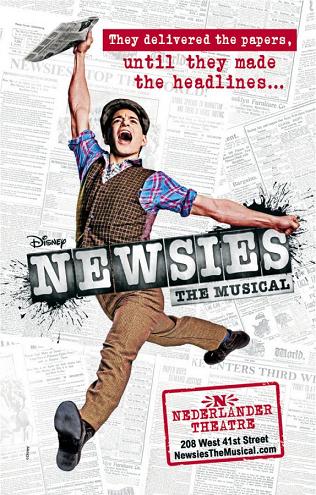 The Broadway musical Newsies is said to be hitting the capital’s West End with leaps, kicks and turns in the spring of 2014. As a result of this exciting transfer, the hit show, by Harvey Fierstein, will be scouting for UK dance talent to fill the dancing shoes of the production’s esteemed Broadway dancers.
The Broadway musical Newsies is said to be hitting the capital’s West End with leaps, kicks and turns in the spring of 2014. As a result of this exciting transfer, the hit show, by Harvey Fierstein, will be scouting for UK dance talent to fill the dancing shoes of the production’s esteemed Broadway dancers.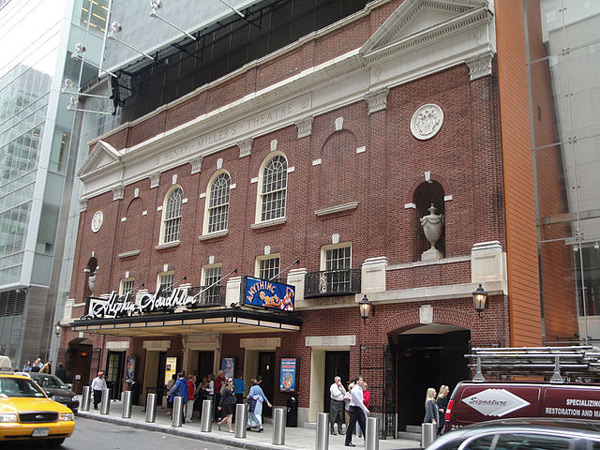 The classic production Anything Goes is back on the musical theatre scene and is currently on tour across North America, visiting St. Louis, Washington, Schenectady, Toronto, Costa Mesa, Portland, Spokane and Seattle. This splendid new production produced by the Roundhouse Theatre Company will feature all the iconic tracks such as ‘I get a Kick out of You’, ‘It’s De-Lovely’ and ‘Anything Goes’, with the legendary Cole Porter the genius behind the music and lyrics of this sassy Broadway musical.
The classic production Anything Goes is back on the musical theatre scene and is currently on tour across North America, visiting St. Louis, Washington, Schenectady, Toronto, Costa Mesa, Portland, Spokane and Seattle. This splendid new production produced by the Roundhouse Theatre Company will feature all the iconic tracks such as ‘I get a Kick out of You’, ‘It’s De-Lovely’ and ‘Anything Goes’, with the legendary Cole Porter the genius behind the music and lyrics of this sassy Broadway musical.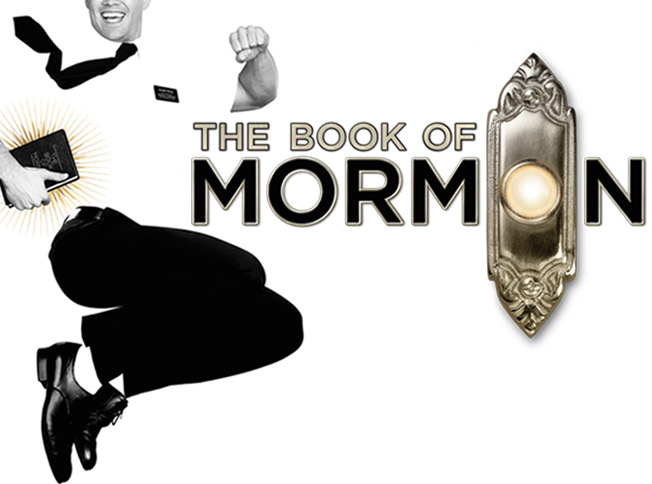
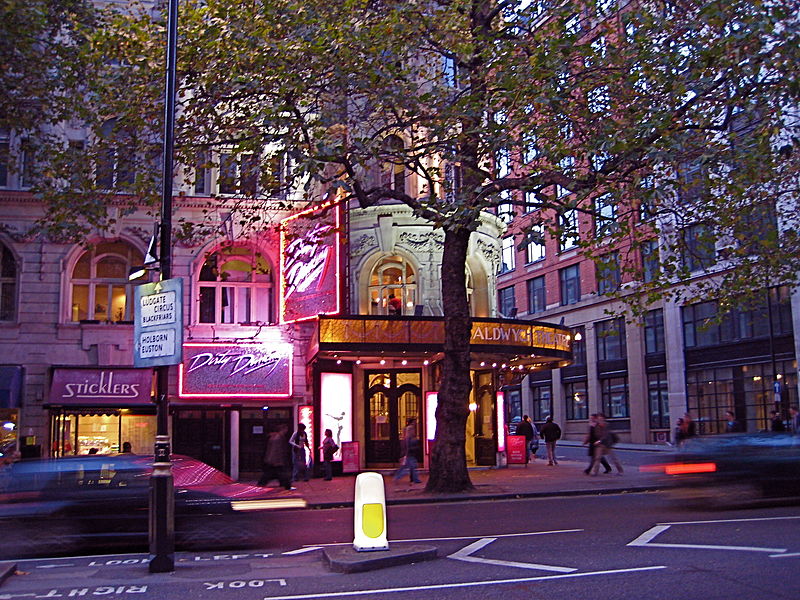 The hit West End musical that went on to tour the UK, Dirty Dancing, is set to replace Viva Forever! at the Piccadilly Theatre in the West End, depicting a story of talent shows and friendships set to the music of the iconic Spice Girls. Despite this pull, the new musical is set to close its doors later this summer and welcome Dirty Dancing, which previously played in London at the Aldwych Theatre from 2006 until 2011 and has since been touring the UK. The much-loved musical will finish touring in June at the Manchester Opera House before returning to London and opening at the Piccadilly Theatre from July.
The hit West End musical that went on to tour the UK, Dirty Dancing, is set to replace Viva Forever! at the Piccadilly Theatre in the West End, depicting a story of talent shows and friendships set to the music of the iconic Spice Girls. Despite this pull, the new musical is set to close its doors later this summer and welcome Dirty Dancing, which previously played in London at the Aldwych Theatre from 2006 until 2011 and has since been touring the UK. The much-loved musical will finish touring in June at the Manchester Opera House before returning to London and opening at the Piccadilly Theatre from July.
 Where did you go to train and what was it like there?
Where did you go to train and what was it like there? Theatre tickets are, quite simply, difficult to come by. Gone are the days when a member of the audience went to the box office in person and bought a ticket, used a ticket agency or even called the theatre to make a reservation, then sent a cheque or postal order by mail.
Theatre tickets are, quite simply, difficult to come by. Gone are the days when a member of the audience went to the box office in person and bought a ticket, used a ticket agency or even called the theatre to make a reservation, then sent a cheque or postal order by mail.